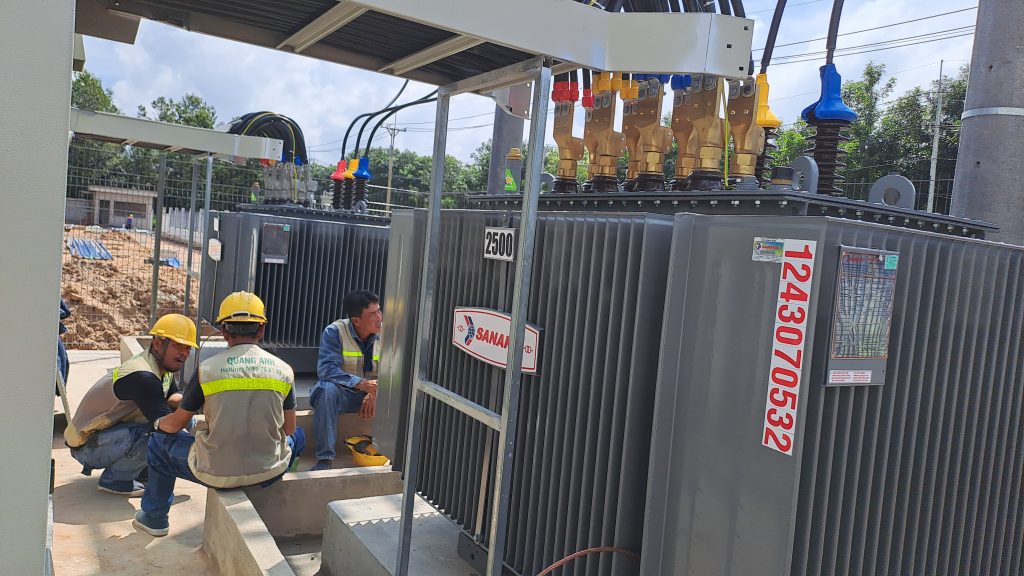News
Dong Nai solar power planning 2023-2025: Tri An project, transmission grid and DPPA mechanism
- Power Development Plan VIII and solar projects at Tri An.
- Irradiation potential and deployment models: ground-mounted farms and rooftop PV.
- Operational status and bottlenecks in rooftop solar payment.
- Transmission grid, substations and capacity evacuation constraints.
- Mechanisms: bidding, FIT, renewable DPPA; land-use and environmental planning.
Dong Nai solar power planning for 2023–2025 is guided by Power Development Plan VIII (Decision 500/QD-TTg), recording two projects at Tri An with a total capacity of about 1,029 MW under the self-generation, self-consumption model. The province has high irradiation potential, suitable for both ground-mounted projects and rooftop solar, but payment bottlenecks exist due to land-use planning. Transmission infrastructure needs upgrading to evacuate capacity, while pricing mechanisms are shifting to competitive bidding and promoting renewable DPPA. Prioritizing land-use and environmental planning remains a focal point to ensure synchronized implementation.
Power Development Plan VIII and solar projects at Tri An.
Power Development Plan VIII and solar projects at Tri An.
Dong Nai solar power planning is steered by Power Development Plan VIII (Decision 500/QD-TTg, 15/5/2023), establishing two Tri An solar power projects with a total capacity of about 1,029 MW: 928 MW linked to Tri An hydropower and 101 MW not yet in operation, all oriented for implementation under the self-generation, self-consumption model. At the national level, solar capacity is expected to increase by about 4,100 MW by 2030 and target a scale of 168–189 thousand MW by 2050, creating regional interconnection headroom for Dong Nai. In addition, the province is also confirmed to have 3 more large-scale renewable energy projects, mostly solar power, synchronized with the plans of the province and the Ministry of Industry and Trade. Therefore, Dong Nai solar power planning needs to closely follow interconnection around the Tri An hydropower area and ensure compatibility with updates from Power Development Plan VIII on sources – grid to optimize capacity arrangement and stable operation..
Overall orientation and Tri An’s position in the national landscape
Power Development Plan VIII sets out a national roadmap for renewable energy development with the goal that by 2050, the share of renewables (including solar power) will reach about 67.5–71.5% of total generation. By 2030, the orientation is to form 2 interregional industrial – service centers for renewable energy, creating momentum for Dong Nai solar power associated with the Southern region. Within that structure, Tri An solar power is positioned as a key component, working closely with Tri An Hydropower to ensure real-time system balancing.
Project scale and source–grid coordination requirements at Tri An
In the Tri An (Dong Nai) area, total solar power capacity is approximately 1,029 MW, of which about 928 MW has been operating in a configuration linked with Tri An Hydropower and about 101 MW is not yet in operation. This scale requires a synchronized operational architecture: solar power generates according to daytime irradiation while hydropower assumes the roles of frequency and voltage regulation and provides reactive support when solar output declines. This coordination helps improve supply reliability and make good use of existing transmission infrastructure along the Tri An corridor.
- Role of Tri An Hydropower: provide fast primary frequency response (PFR) and slow frequency restoration reserve (FRR), support voltage control and reactive power compensation to stabilize local voltage when Tri An solar power output fluctuates.
- Grid compatibility: the system needs a grid interconnection configuration that meets technical standards, ensuring stable capacity evacuation for existing and additional plants.
Transmission infrastructure and investment nodes under Power Development Plan VIII
According to the orientation of Power Development Plan VIII, transmission infrastructure in the Dong Nai – Tri An area is prioritized for reinforcement, especially lines and substations at 220 kV and above to enhance the ability to connect solar sources to the national power system. Coordinated investment in sources – grid helps reduce local overload risks, maintain safe – stable operation, and ensure flexible dispatch between hydropower and solar sources. As Dong Nai solar power expands, optimizing the grid interconnection problem at suitable voltage levels is a prerequisite for sustainable capacity evacuation.
Self-generation, self-consumption model and flexible interconnection configurations
Power Development Plan VIII strongly encourages the self-generation, self-consumption model for households and enterprises, targeting over 50% of buildings being able to self-supply with solar power. At Tri An, this orientation helps reduce stress on the central grid while creating flexible grid interconnection structures between distributed solar clusters and the regional grid. For manufacturing facilities – industrial parks in Dong Nai, implementing self-generation, self-consumption in coordination with Tri An Hydropower reduces power swings onto the grid, increases forecastability and stabilizes internal loads.
Technical constraints and compliance requirements
The technical framework of Power Development Plan VIII requires compliance with the N-1 principle on transmission and distribution networks, ensuring that when one element fails, the system still operates safely. In addition, plants must perform power control to avoid grid overload while meeting national standards for a smart, safe and stable grid. For Tri An solar power, flexible control functions and supply–demand coordination with Tri An Hydropower (frequency/voltage control, PFR/FRR) are the technical focus in design and operation.
Regional interconnection and capacity dispatch
Tri An is a regional anchor connecting the Southern region with the national grid, where Tri An Hydropower acts as the “metronome” for frequency and voltage control mechanisms, helping to absorb oscillations from Dong Nai solar power. This advantage increases real-time supply reliability, reduces transmission stress on 220 kV corridors and above, and creates headroom for expanding solar capacity while keeping voltage and frequency quality under control.
Additional renewable capacity in Dong Nai and implementation implications
According to the plan, Dong Nai is supplemented with large-scale renewable energy projects (mainly solar power) with a total capacity that may exceed 1,000 MW, in line with regional potential. This raises requirements for planning synchronized grid interconnections, optimizing connection points, substation – line configurations, and coordinated dispatch mechanisms with nearby hydropower to ensure stable capacity evacuation across the load range.
Implementation roadmap and investment priorities
After Power Development Plan VIII was approved (15/5/2023), the Ministry of Industry and Trade issued a detailed implementation plan, prioritizing projects with economic efficiency and contributions to energy security. The focus is on developing solar power combined with hydropower while investing in transmission grids in key areas such as Dong Nai – Tri An. Projects with delays are reviewed and flexibly adjusted under the spirit of an open plan to ensure overall system balance and national investment efficiency.
Suggested actions for businesses in Tri An – Dong Nai
- Develop source–grid plans aligned with Power Development Plan VIII, prioritizing the self-generation, self-consumption model to reduce dependence on the central grid and increase operational flexibility.
- Coordinate closely with Tri An Hydropower in dispatch scenarios, ensuring the ability to meet PFR/FRR and voltage control requirements to stabilize the system when solar power fluctuates.
- Evaluate grid interconnection options at suitable voltage levels, comply with the N-1 principle and power control requirements to avoid local overload.
Technical focus overview
Tri An solar power develops under Power Development Plan VIII with synchronized sources – grid and coordinated dispatch with Tri An Hydropower. The main axes include: strengthening transmission at 220 kV and above, expanding the self-generation, self-consumption model, complying with N-1 and grid standards, along with flexible grid interconnection mechanisms. These are the conditions for Dong Nai solar power to maximize its potential and maintain stable operation under the planning orientation.

Irradiation potential and deployment models: ground-mounted farms and rooftop PV.
Dong Nai solar power planning is supported by the high irradiation potential of the Southern region, suitable for developing both ground-mounted projects and Dong Nai rooftop solar. In practice, besides large-scale solar farms, the area records many rooftop models, notably in Long Khanh City with projects of nearly 1 MW each (e.g., crop farms in Bao Quang). Irradiation advantages help shorten the time to reach design output and increase operational efficiency when combined with self-generation, self-consumption solutions. To leverage the potential, Dong Nai solar power planning needs to synchronize connection points with hydropower areas and the existing grid, thereby creating space for Tri An solar power and rooftop models to expand within an appropriate legal framework..
Dong Nai solar irradiation is recorded at favorable levels for both rooftop solar and solar farms, with global horizontal irradiation of about 1.7–1.9 thousand kWh/m²/year and an average sunshine duration of about 2.4 thousand hours/year [1]. These figures correspond to an average intensity of approximately 5 kWh/m²/day in favorable months, providing a foundation for stable year-round output.
Irradiation conditions and seasonal variability
- Regional comparison: the Southern region has an average intensity of about 5.9 kWh/m²/day, significantly higher than the North (3.69 kWh/m²/day) [3][7]. In Southeast provinces such as Binh Duong, Ho Chi Minh City, Can Tho, irradiation ranges from 4.5–5.7 kWh/m²/day in summer and 2.2–3.2 kWh/m²/day in winter [4].
- Regional reference points: Nha Trang (Khanh Hoa) reaches about 5.815 kWh/m²/day for 8 months of the year [3][5], reflecting high potential amplitude along the South Central Coast compared to the regional average.
- Sunny-day cycles: months with extended sunshine often fall in January, March, April (from 7 am to 5 pm) [5][6], suitable for optimizing operating strategies over extended generation windows.
- Local factors: cloud cover and atmospheric layers cause irradiation differences across areas and should be considered when calibrating designs and forecasting output [3].
Development targets under Power Development Plan VIII
In 2023–2030, Power Development Plan VIII allocates 229 MW of additional solar capacity to Dong Nai, a high allocation among provinces and municipalities [1]. The total national additional capacity in this period reaches about 2.6 thousand MW, indicating that renewable energy investment is centered in the Southern region [1]. This capacity allocation matches Dong Nai’s solar irradiation foundation, creating room for both rooftop solar and solar farms to develop in line with local load demand.
Supporting infrastructure for deployment
- Industrial roof stock: more than 7 thousand hectares of factory roofs in industrial zones provide favorable physical conditions to expand large-scale rooftop solar, supplemented by roofs in industrial clusters, agricultural farms, public offices and residences [1].
- Transmission grid: many important 500 kV and 220 kV works pass through the locality [1], favorable for 220 kV/500 kV interconnection and supporting capacity evacuation when developing projects connecting to the national grid.
Implications for deployment models in Dong Nai
- Rooftops in industrial parks: leverage the large roof stock to deploy rooftop solar, exploiting the high sunshine duration to meet production loads under self-generation, self-consumption.
- Ground-mounted projects: with 500 kV/220 kV grid corridors traversing the locality, solar farms have favorable conditions for transmission corridors to connect and evacuate capacity when allocated in harmony with existing infrastructure.
- Seasonal operation: extended sunshine in certain months helps optimize maintenance schedules, while variability due to clouds and atmosphere requires updated irradiation forecasts for proactive internal dispatch.
Overall, Dong Nai’s solar irradiation, the targets in Power Development Plan VIII and the existing grid’s capability are pillars enabling the province to expand both rooftop solar and solar farms along a feasible investment roadmap.
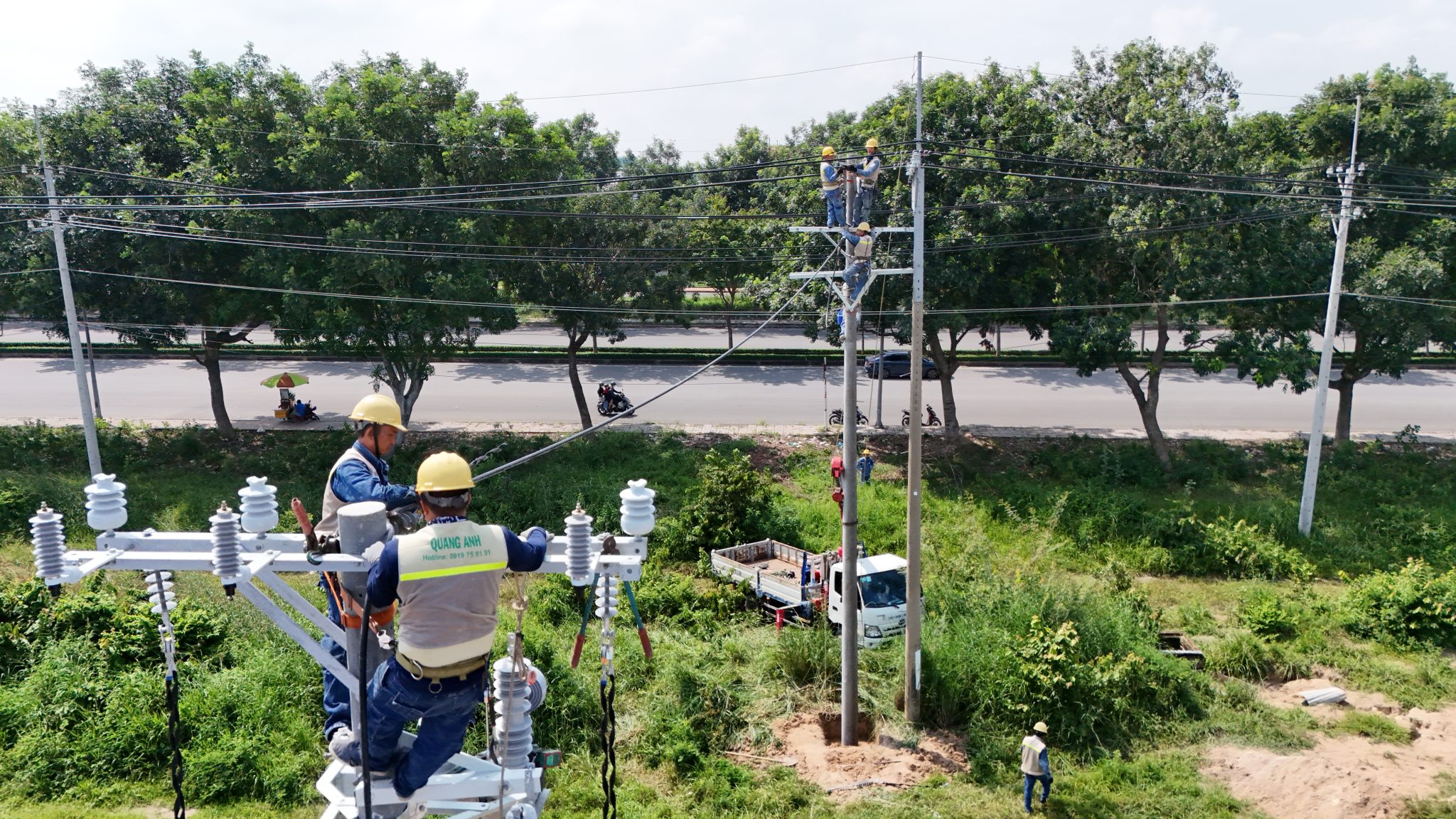
Operational status and bottlenecks in rooftop solar payment.
Operational status and bottlenecks in rooftop solar payment.
Dong Nai solar power planning records a significant number of rooftop systems, but the payment process is facing difficulties because many projects no longer conform to the current land-use planning, leading to temporary suspension of interconnection and payments. This is an important operational bottleneck for Dong Nai rooftop solar, requiring a review of the suitability of land-use purposes and updates according to local plans. For large-scale projects connected to the Tri An hydropower system, actual operating capacity information up to 2023 is incomplete as they are still in the preparation stage. Therefore, Dong Nai solar power planning needs to prioritize handling land and interconnection procedures to unlock existing projects while ensuring compliance with the legal framework when expanding new capacity..
System status and operational characteristics
Dong Nai records many rooftop solar systems with a wide capacity range, where installations for households and small businesses account for the majority. For household-scale systems, grid-tied capacity is usually below 10 kWp; this group does not require construction permits but must notify the power utility if they wish to sell surplus power to the grid. The dispersion of capacity requires alignment between land-use planning and grid interconnection capability to ensure transparent metering and payment.
Bottlenecks in PPA and solar FIT
- Many cases saw payments stopped or interrupted because projects did not conform to land-use planning at the time of inspection, directly affecting investors’ rights.
- Since around 2020, new system interconnections have been temporarily suspended or restricted due to grid congestion and suboptimal source–load layout, making PPA signing and execution for solar power difficult.
- The legal framework for power purchase agreements lacks uniformity among stakeholders, leading to prolonged negotiation and documentation timelines. In that context, the role of the solar FIT mechanism still needs to be implemented stably during its effective period to maintain market confidence.
Land law framework and the definition of rooftops
- Determining land-use purposes and updating land-use planning in Dong Nai are prerequisites when installing systems on building roofs. Guidance follows central documents, helping the locality apply consistently.
- The definition of “rooftop” lacks a unified standard, leading to debates about the allowable area on different roof types (metal sheet, concrete, tile; new or existing roofs). This directly affects PPA file appraisal for solar power and decisions to approve grid interconnection.
Central directives and local orientation
- Document 7088/BCT-DL (22/9/2020) of the Ministry of Industry and Trade provides detailed guidance on rooftop solar development, including grid interconnection, payment mechanisms and power utility responsibilities.
- Decision 13/2020/QD-TTg and Decree 135/2024/ND-CP establish a legal framework supporting deployment, serving as the basis for parties to comply when signing solar PPAs and applying the solar FIT during the corresponding period.
- Dong Nai plans to promote efficient energy use, focusing on rooftop solar in the 2025 period, helping integrate land-use planning requirements with actual investment schedules.
Planning, interconnection and linkage with Tri An hydropower
- Regional power planning is reviewed to address grid interconnection bottlenecks and source balance, including coordination between solar sources and Tri An Hydropower to optimize local infrastructure.
- The policy to enhance bidirectional interconnection goes hand in hand with accurate metering systems deployed by the local power utility, allowing transparent accounting of self-consumed and exported portions.
Metering – payment and requirements after the FIT period
- Bidirectional meters installed and verified by EVN are the technical foundation to determine self-consumption and exported energy, serving payment under solar PPAs.
- Payments are usually made monthly via bank transfer; invoicing differs between households and enterprises but is based on authenticated metering data.
- The solar FIT mechanism currently applies until the end of 2040 at fixed prices; after that, follow-on regulations are needed to ensure market continuity and maintain investment incentives for rooftop solar.
Specific bottlenecks and priority actions
- Bottlenecks concentrate on standardizing the rooftop definition, completing land-use planning, and upgrading infrastructure to avoid recurrent grid interconnection suspension.
- Investment needs in distribution grids and metering increase with the growth of rooftop solar sources, thereby laying the groundwork for stable solar PPA signing and execution.
- Continued regulatory updates after the solar FIT period will help the market maintain predictability, minimizing operational and payment risks for rooftop solar.
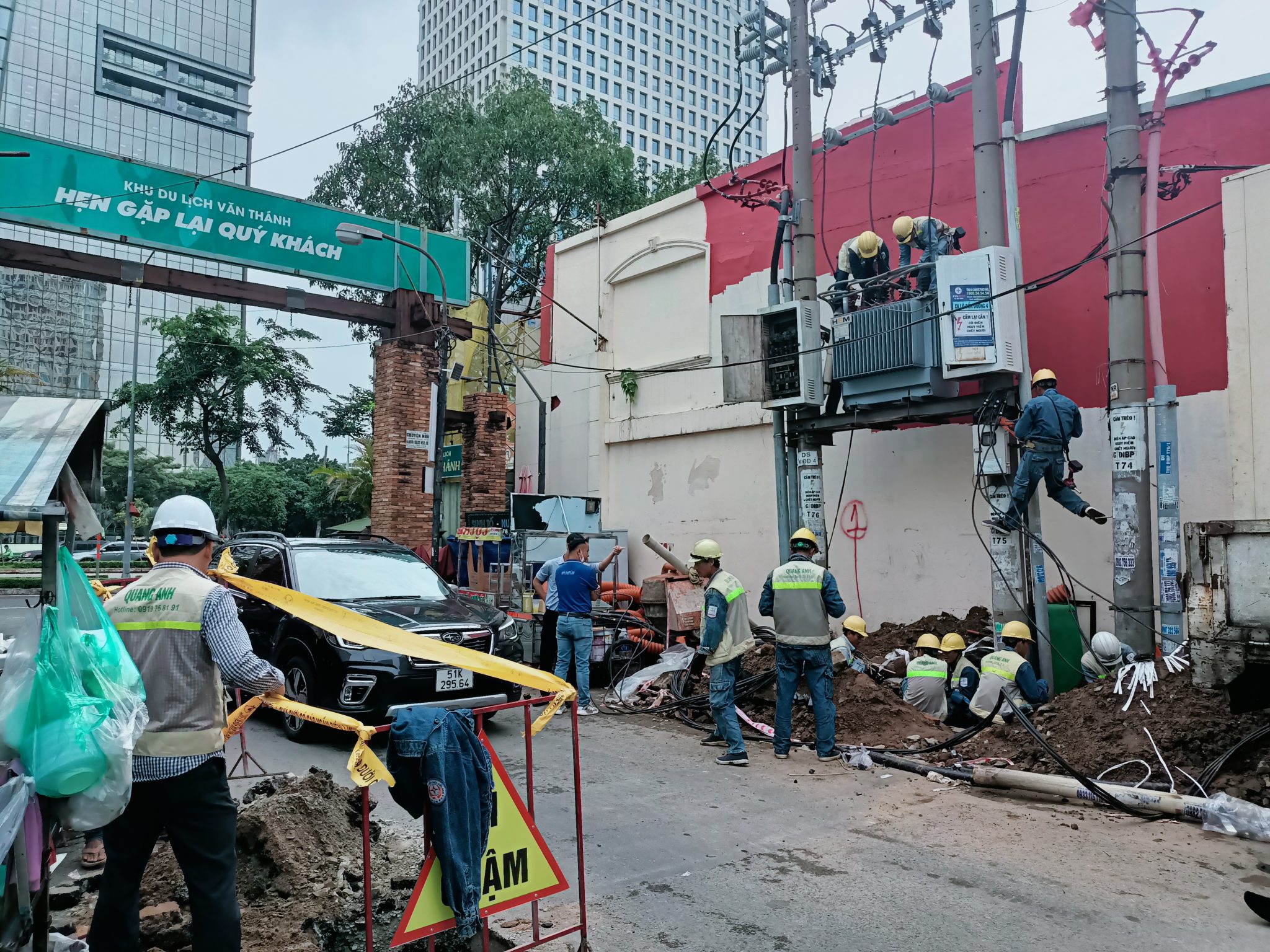
Transmission grid, substations and capacity evacuation constraints.
Dong Nai solar power planning is closely tied to transmission grid capability as large projects interconnect via the Tri An hydropower cluster. The infrastructure now needs upgrades and refurbishment to ensure capacity evacuation, prevent overload and reduce congestion risks during peak sunny seasons. Synchronized planning of sources – grid – substations is key to optimizing time to operation and improving readiness for interconnection. In the context of national solar additions projected to 2030, the Dong Nai area needs to prioritize capacity reinforcement items at related nodes. By embedding capacity evacuation requirements into design, Dong Nai solar power planning will support safe operation and lay the foundation for expanding Tri An solar power in the next phase..
Current infrastructure and critical nodes
Dong Nai operates a multi-level grid structure, where capacity evacuation for renewable sources depends directly on the strength of connections between sources – grid – substations. The current infrastructure scale records:
- Medium-voltage grid: over 12,000 km; low-voltage grid: nearly 12,000 km.
- More than 31,000 medium-voltage substations.
- 110 kV grid: 45 substations with a total capacity of over 4,500 MVA; 85 lines with a total length of more than 1,000 km.
- The 220 kV and 500 kV transmission grids have been co-invested, tightly linked with the national system; 220 kV/110 kV nodes play central distribution roles, especially in major industrial zones and urban areas.
Nodes at 220 kV/110 kV concentrate loads and distributed sources, so optimizing the connection between 220 kV substations and the 110 kV grid is crucial to increasing the ability to receive new sources.
Role of hydropower sources and seasonal load characteristics
Tri An Hydropower is one of the key sources in the area, helping stabilize operation and support capacity balance. Hydropower sources currently feed into 35 kV lines before transmitting to 110 kV substations, forming concentration points. Entering the sunny season, industrial park loads rise at the same time solar generation peaks, increasing pressure on 110 kV trunks and tie lines to 220 kV substations.
Constraints and congestion during peak sunshine
Rapid solar development in Dong Nai, Binh Duong and Ho Chi Minh City makes capacity evacuation requirements urgent. Key constraints include:
- Distribution grid carrying capability (especially medium/low voltage) remains limited for large capacities, leading to local overloads.
- 110 kV/220 kV substations often operate at high loading levels in sunny seasons, reducing reserve margins.
- Congestion during peak irradiance: lines and substations are prone to overload, causing voltage drops and stability risks.
To address this, synchronized technical solutions are needed: substation uprating, line expansion, flexible power flow control and SCADA plus smart grid solutions at nodes related to Tri An Hydropower and along the 110 kV network.
Orientation to 2030 under Power Development Plan VIII
Power Development Plan VIII emphasizes synchronized development of sources – grid – substations to increase margins for new sources and reduce overload risks. In 2025–2030:
- Build 102,900 MVA of new and refurbish 23,250 MVA of 500 kV substations.
- Build 12,944 km of new and refurbish 1,404 km of 500 kV lines.
- Build 105,565 MVA of new and refurbish 17,509 MVA of 220 kV substations.
- Build 15,307 km of new and refurbish 5,483 km of 220 kV lines.
Orientation 2031–2035: develop 26,000–36,000 MW of HVDC converter station capacity and 3,500–6,600 km of HVDC lines, increasing interregional transmission capability to support capacity evacuation for large source clusters.
Priority items in the Southeast region
The Southeast region, including Dong Nai, Binh Duong and Ho Chi Minh City, needs to prioritize the following items to strengthen transmission corridors:
- Dong Nai: build/upgrade 220 kV and 110 kV substations; expand 220 kV/110 kV lines; complete metering – SCADA infrastructure to improve observability and control.
- Binh Duong, Ho Chi Minh City: reinforce 220 kV, 500 kV interconnections; add GIS substations and underground substations in load centers; enhance supply reliability.
Synchronization between 220 kV substations, the 110 kV grid and 500 kV tie lines will directly improve the ability to receive new sources, helping reduce loading at nodes operating at peak levels.
Related projects and connection points
In Dong Nai, notable items include the 220 kV substation in Nhon Trach industrial park and its tie-in lines; in addition, projects to upgrade and expand 220 kV and 110 kV lines. The entire Southeast region continues to strengthen 500 kV/220 kV interconnections between provinces and add 220 kV substations in dense load areas to support capacity evacuation for solar clusters and industrial loads.
Operational organization and dispatch requirements
NLDC/A0 performs national power system dispatch, coordinating capacity and balancing supply–demand in real time. Applying control, monitoring and fault warning technologies improves grid responsiveness when renewable sources fluctuate rapidly, especially in areas influenced by Tri An Hydropower and solar concentration points. Combining NLDC/A0 operating data with investment plans under Power Development Plan VIII provides a basis for implementing flexible control options, optimizing capacity evacuation at 220 kV/110 kV nodes.
Technical approach for the next phase
Integrate the following solutions into design and implementation:
- Optimize the 110 kV grid configuration: regionalize loading, reduce concentration of power flows into a few nodes; strengthen ring interconnections and install appropriate control devices.
- Upgrade 220 kV and 110 kV substations: expand bays, increase transformer capacity, apply GIS substations and unattended substations depending on site conditions.
- Expand 220 kV/500 kV interregional corridors: ensure flexible power flow trajectories from the Southeast region to neighboring areas.
- Enhance digital operation: SCADA, online monitoring, early overload warnings in real time to proactively evacuate capacity when solar output surges.
This approach helps leverage the role of Tri An Hydropower in balancing operations while creating headroom for new projects to connect safely to 220 kV substations and the 110 kV grid, in line with Power Development Plan VIII’s orientation.
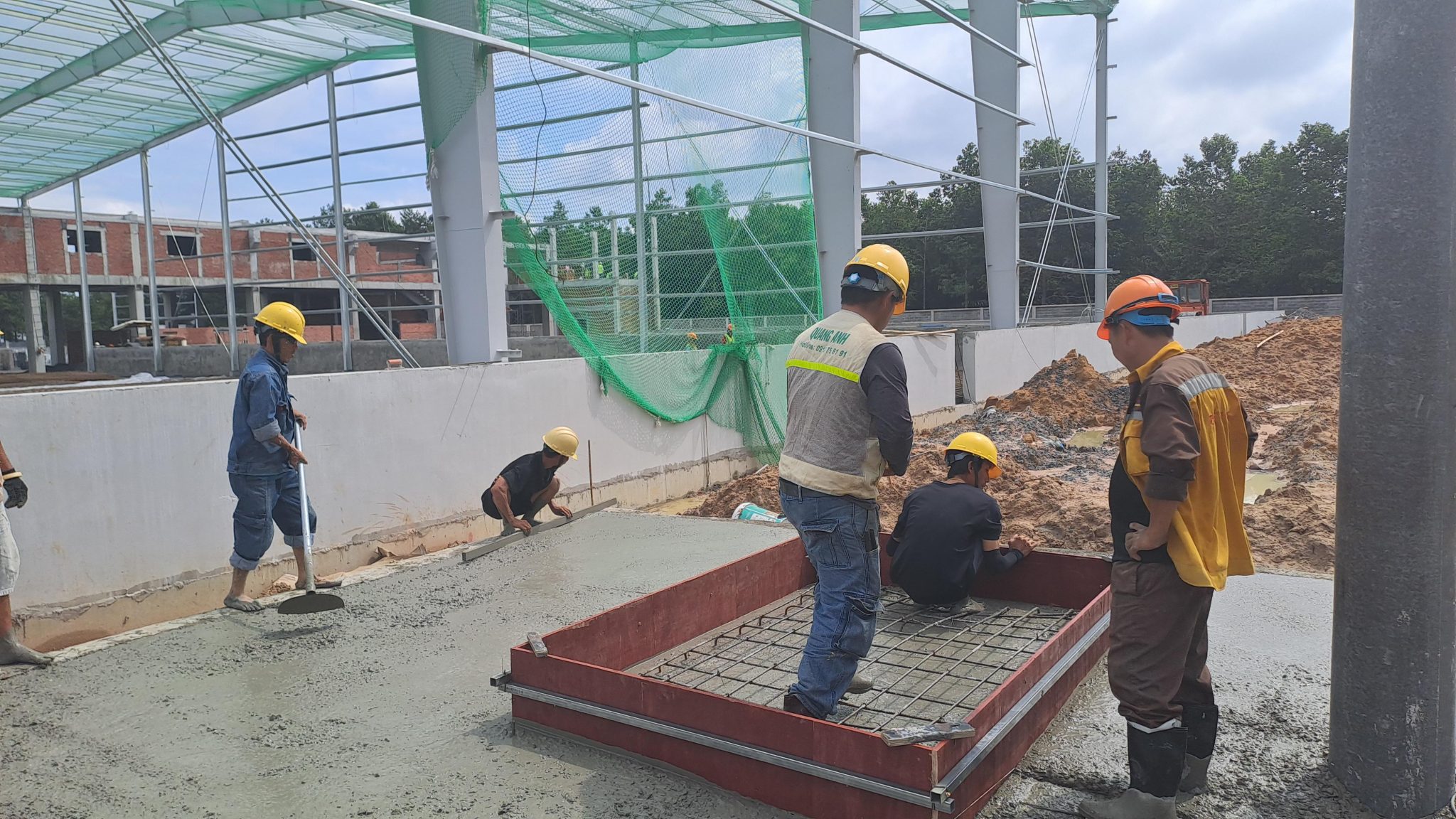
Mechanisms: bidding, FIT, renewable DPPA; land-use and environmental planning.
Dong Nai solar power planning operates in the context of pricing mechanisms shifting from historical FITs to open competitive bidding, encouraging cost optimization and improved investment efficiency. For non-rooftop projects, the self-generation, self-consumption model is being prioritized; in parallel, renewable DPPA is being promoted to increase transaction flexibility for industrial customers, although detailed guidance at the local level is still being finalized and piloted. Legally, land-use planning for 2021–2030 has required a review of project conformity, while the locality continues to prioritize suitable land banks and minimize environmental impacts. Ensuring policy synchronization will help Dong Nai solar power planning align with the Southern region’s clean energy expansion goals in 2023–2025 and beyond..
From historical FITs to competitive bidding
- Legal basis during the FIT phase: Decisions 11/2017/QD-TTg, 13/2020/QD-TTg and 23/2021/QD-TTg established solar FIT and wind FIT as fixed feed-in tariffs, with contract terms typically 20 years.
- End of application: The FIT mechanism for solar power ended at the end of 2020; for wind power it ended at the end of 2021.
- System impacts: Strongly attracted investment but led to grid overload, while creating a need to enhance transparency in investor selection.
Transition to competitive bidding
- Legal foundation: Law on Electricity 2020, Decree 56/2025/ND-CP, Decree 58/2025/ND-CP and Power Development Plan VIII orient the shift to open competitive bidding.
- Scope of application: Applies to new solar power bidding and large-scale wind projects; does not apply to projects approved in principle before the transition.
- Forms & criteria: Two-envelope process (RFQ/RFP), evaluation of capability and price; winning prices must not exceed caps issued by the Ministry of Industry and Trade, consistent with the power generation price framework.
DPPA for industrial customers
- Legal basis: Law on Electricity 2020 and Decree 57/2025/ND-CP allow direct power transactions between renewable generators and large customers.
- Transaction model: Vietnam DPPA allows direct power purchase agreements without going through EVN.
- Core process: Registration, licensing, contract signing and grid interconnection.
- Cost accounting: Costs of surplus power purchases are included in EVN’s wholesale and retail tariffs according to regulations.
- Value delivered: Greater flexibility, reduced dependence on traditional procurement, and promotion of on-site renewable development.
Self-generation, self-consumption and prioritization of non-rooftop projects
- Legal framework: Law on Electricity 2020 and Decree 58/2025/ND-CP provide guidance on rooftop solar.
- Operating principle: Rooftop solar systems serve self-generation, self-consumption; surplus can be sold back to EVN or participate in DPPA.
- Planning priority: Non-rooftop projects (on land, on water) are prioritized in planning and bidding under current regulations.
- Key conditions: Projects must receive investment policy approval before 01/01/2031 and fall within the 6,000 MW total under Power Development Plan VIII.
- Limitations: Excess capacity or approvals after the specified milestone will be governed by current law.
Land-use planning and EIA for 2021–2030
- Land-use planning: Under the Land Law 2013/2024 and Power Development Plan VIII, projects must conform to 2021–2030 land-use plans at provincial/district levels; ensure they do not fall within environmental protection areas, residential areas or heritage sites.
- Legal procedures: Projects must be licensed and comply with regulations on land-use conversion for renewables.
- Environmental impact assessment (EIA): Under the Law on Environmental Protection 2020, EIAs must assess environmental–social impacts, propose mitigation and commit to environmental protection; approval authority rests with provincial/municipal environmental agencies.
Context of Dong Nai and the Southern region
Dong Nai
- Development orientation: Among localities prioritized for renewable energy (solar and wind) under Power Development Plan VIII.
- Land bank: Many industrial zones and vacant land suitable for non-rooftop projects, favorable for integration with the self-generation, self-consumption model.
- Environment and procedures: Strict EIA requirements, especially for projects near residential/ conservation areas; the locality has specific guidance on permitting, interconnection and investment incentives for renewables.
Southern region
- Resource potential: Large potential for solar and wind, especially coastal areas and industrial clusters.
- Planning synchronization: Many provinces have updated land-use and power plans under Power Development Plan VIII, forming the basis for solar power bidding and expanding Vietnam DPPA.
- Implementation & challenges: Many projects have been deployed under bidding, DPPA and self-generation, self-consumption models; however, the grid is under overload pressure, requiring infrastructure upgrades and coordination among authorities.
Compliance with the legal framework on bidding, DPPA, land-use planning and EIA, together with optimizing project configurations under the non-rooftop priority, will help investors and industrial customers effectively capture the transition period, especially in Dong Nai and the wider Southern region.
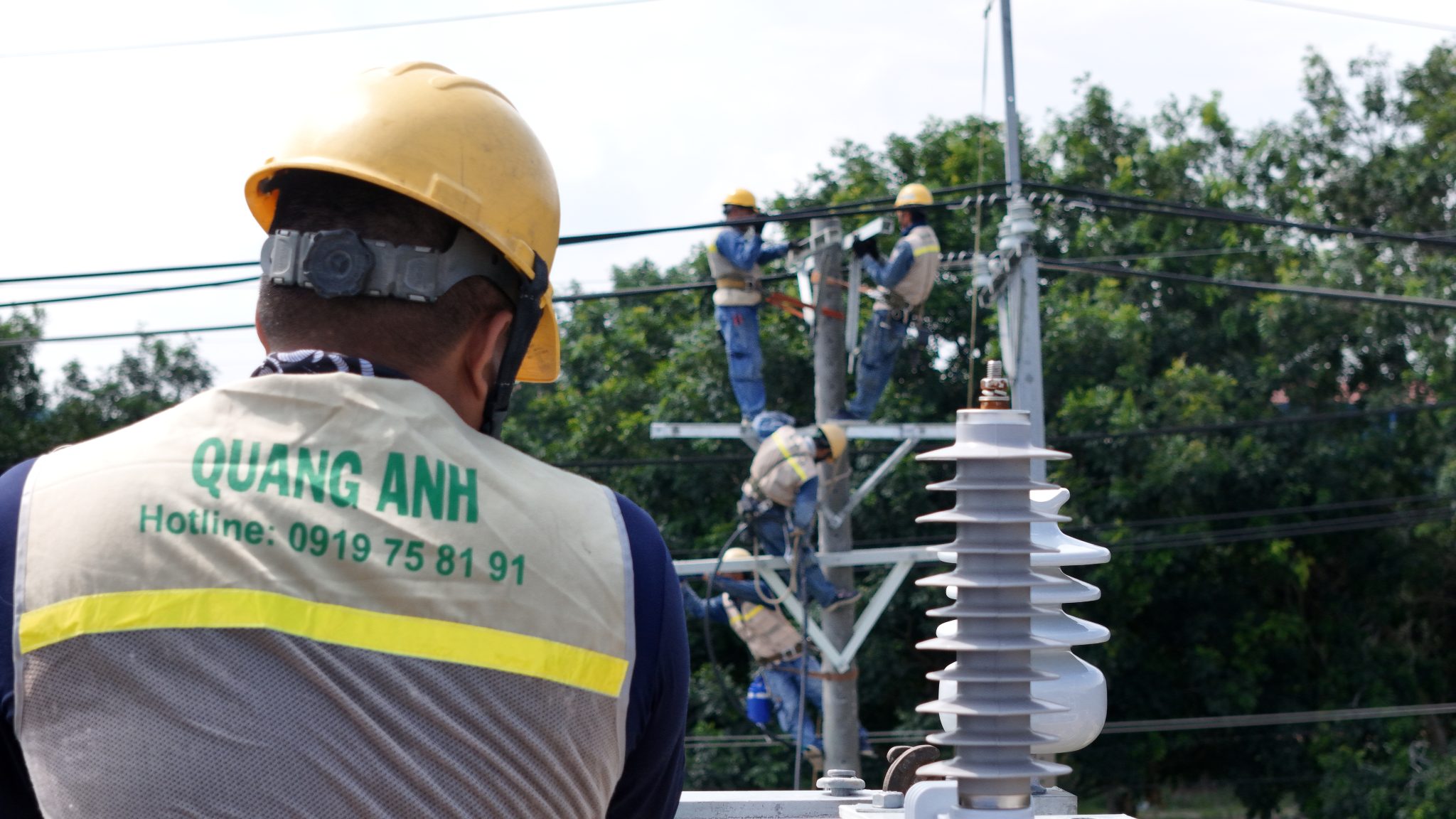
Dong Nai solar power planning shows room for expansion thanks to two Tri An projects totaling 1,029 MW, irradiation advantages and flexible mechanism orientations. Prioritizing grid upgrades for capacity evacuation, removing land bottlenecks and promoting DPPA will increase technical – investment certainty and align with the Southern region’s clean energy goals for 2023–2025 and subsequent years.
Need to update your plan under Dong Nai solar power planning and the DPPA mechanism? Contact QuangAnhcons – Hotline: +84 9 1975 8191.
Based on research content, this article by QuangAnhcons provides planning information, mechanisms and technical constraints related to solar power in Dong Nai for 2023–2025. The content does not include detailed service descriptions; please contact the Hotline for information within the scope of current planning and policies.

 Tiếng Việt
Tiếng Việt 简体中文
简体中文 Deutsch
Deutsch 日本語
日本語 한국어
한국어 ไทย
ไทย Русский
Русский Français
Français
